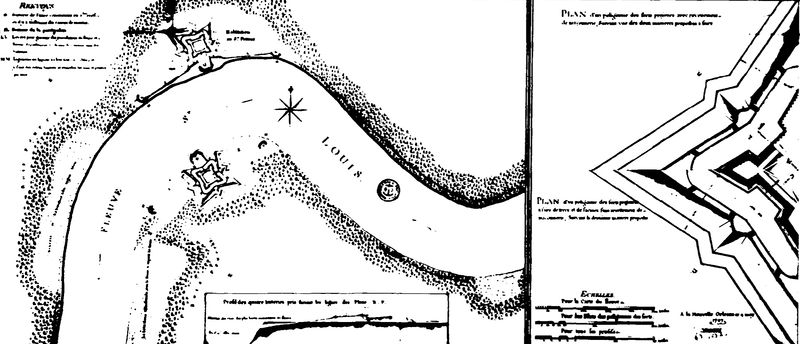Fort St. Mary
|
History French Fort St. Mary (1746-1766)As early as 1722 Bienville may have established unnamed batteries and a warehouse at English Turn. In 1746 construction begins on two English Turn batteries and forts, one set on each bank. In 1747 formal plans are drawn for two Forts and two batteries. In 1748 the batteries are damaged by strong winds and then repaired. On 12 Apr 1749 a drawing of the fort indicates upriver side of the great battery unfinished, The garrison may have left before the end of that year By 24 Apr 1752, an inventory of artillery in Louisiana showed the two forts at English Turn to be the most heavily armed posts in French Louisiana with some 30 18-pounder cannons and 1247 pieces of 18 pound shot along with 12 cannons of smaller size. By the fall of 1752, the two forts have 4 companies, some 200 men at the two forts with a common commander. In 1754 the French & Indian War began between the French & the British. The start of the war (undeclared until 1756) found the English Turn Forts and Batteries in poor shape because of the earlier decision not to use masonry to face them. In October 1755 the battery rebuilding was was well along and for the first time, the fort is referred to as Fort St. Mary. French Canada fell to the British in 1760 and France ceded New Orleans and lands west of the Mississippi River to Spain to keep them out of British. In 1763, at the Treaty of Paris, England received Canada and everything France owned on the left (descending) bank of the river except the town of New Orleans and the island where it stood. A British spy reported in 1765 nineteen guns at Fort St. Leon and twenty-one guns at Fort St. Mary.
Spanish Fort St. Mary (1766-1773)The Spanish did not send a governor to Louisiana until 1766 and while there were discussions about the fortifications at English Turn little was done to restore them. In 1773 another British spy reported the batteries in ruins and that they had formerly consisted of
Louisiana was retroceded to France in 1800 and the transfer of the colony from Spain to France took place on 30 Nov 1803. On 20 Dec 1803, the colony was transferred to the United States, a result of the Louisiana Purchase. Current StatusExact locaion unknown no visible remains at approximate location.
See Also: Sources:
Links: Visited: No
|